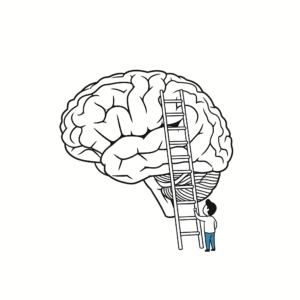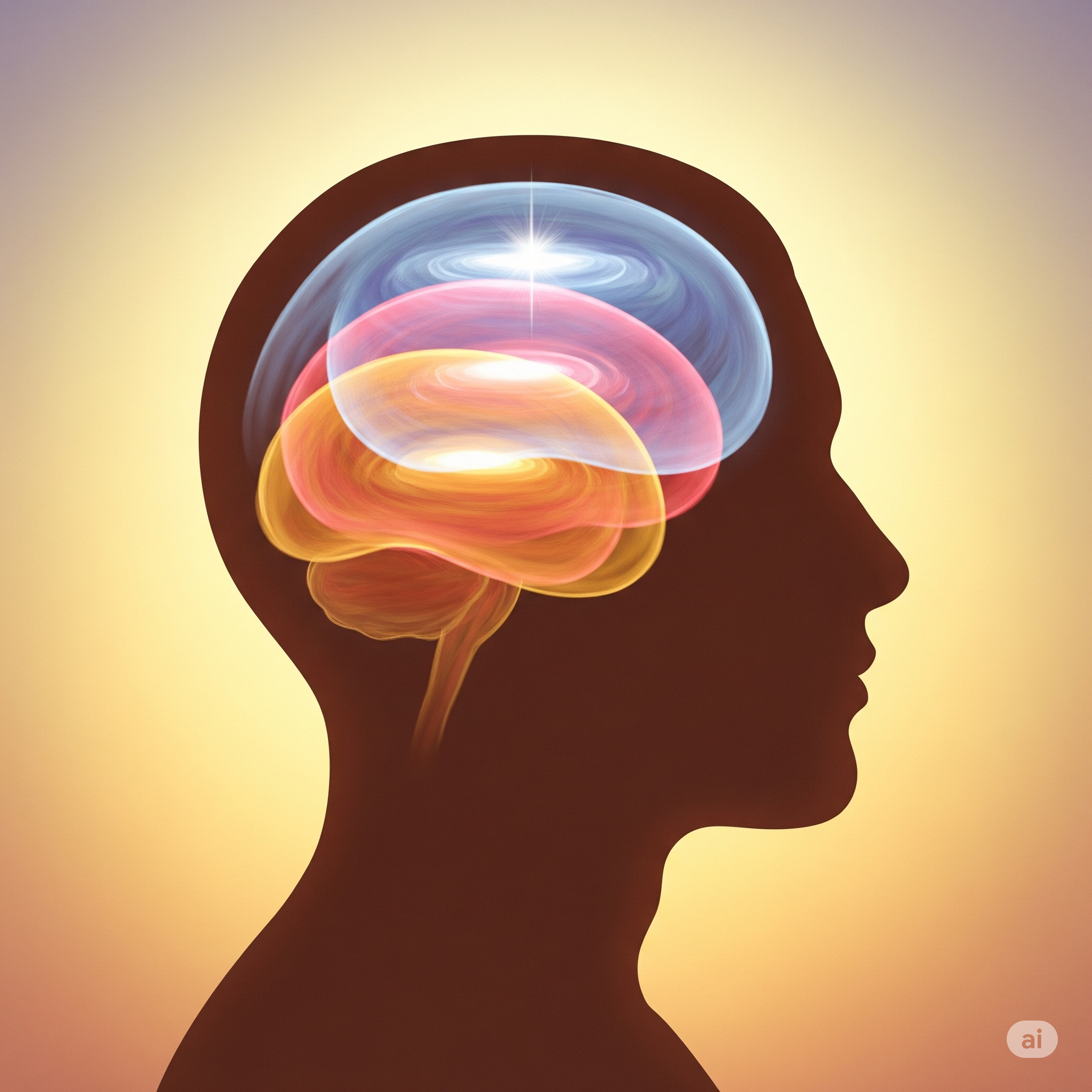I’ve always been a bit of a geek about brains. Even before I could put a name to why, I was fascinated by the intricate, mysterious wiring that makes us who we are. It’s a fascination that has followed me through my life, becoming a quiet but constant companion through my career as a primary school teacher; my journey into parenthood, and—in the biggest plot twist of all—my late diagnosis as an autistic man.
It turns out, understanding how this incredible organ works, or at least having a basic map, has been the key to everything. It’s helped me connect with struggling children, it’s helped me parent my own son with more compassion, and now, it’s helping me finally understand myself.
A Teacher’s Secret Weapon: The Triune Brain and Emotional Regulation
As a primary school teacher, especially in the early days, my world revolved around ‘behaviour management’. It was the accepted term and, frankly, a necessary framework for trying to teach a class of 30 children. It was the tool we had. But the more I learned and observed, the more I realised there was a deeper layer to it all. I came to understand that a child who is shouting, refusing to work, or hiding under a table isn’t choosing to be ‘naughty’—their brain is simply doing its job to protect them. This realisation didn’t erase the challenges of the classroom, but it did change my perspective on how to meet them.
This is where my geeky interest took centre stage. I devoured information on brain development. I learned about the explosive growth of synapses in infancy and the subsequent ‘dendritic pruning’ that refines our neural pathways—a concept that would become intensely personal later on.
But the most revolutionary tool I found was a beautifully simple (if a little outdated, scientifically speaking) model called the triune brain. The idea is that our brain has evolved in three main layers:
- The Reptilian Brain: The brainstem, the most primitive part. Its only job is survival. It asks: Am I safe? Am I hungry? Am I tired? It’s the home of our fight, flight, or freeze response.
- The Limbic System: The emotional brain, wrapped around the reptilian core. It’s the home of connection, memory, and big feelings. It asks: Am I loved? Do I belong?
- The Neocortex: The wrinkly outer layer, our ‘thinking’ brain. It’s responsible for logic, language, planning, and impulse control. It’s the last to develop—in fact, the prefrontal cortex isn’t fully mature until our mid-twenties!

Suddenly, it wasn’t about ‘managing behaviour’ anymore; it was about creating safety. You can’t reason with a child (or an adult!) who is stuck in their reptilian brain. Their neocortex is essentially offline. My job wasn’t to impose order, but to help that child feel safe, seen, and regulated enough that they could climb back up the ladder into their thinking brain. A snack, a quiet corner, a calm voice, a moment of connection… these weren’t rewards; they were neurological necessities.
From the Classroom to the Living Room: Parenting a Less-Travelled Path
This understanding became the absolute bedrock of my approach, not just as a teacher, but when I became an adopted father. My husband and I welcomed our son, a wonderful boy who, through his early life experiences, struggled profoundly. His little brain had learned, quite rightly, that the world wasn’t always a safe place.
Those moments of intense dysregulation, the meltdowns that felt like they came from nowhere, were baffling and heartbreaking. But, my understanding of the triune brain and emotional regulation gave me a map. I could see it wasn’t him giving me a hard time; it was his reptilian brain having a hard time. His threat-detection system was on high alert, all the time.
Understanding Impacting my Parenting Style
So, instead of punishments or demands for him to ‘calm down’, we focused on co-regulation. We focused on meeting those fundamental reptilian needs, over and over again. We became his external neocortex, lending him our calm until his own could come back online. This framework, woven in with other trauma-informed practices, was invaluable. It allowed me to see the scared little boy behind the storm and to parent that boy.
Of course, I need to be honest here: even with the map, I still lose my way sometimes. There were (and still are) plenty of times when my own reptilian brain took the wheel. Times when I was tired, or overwhelmed and I didn’t respond with the calm, co-regulating presence I aimed for. It’s in those moments that the real work happens, I think. Not just in the perfect execution of a strategy, but in the messy, human act of returning, apologising, and repairing the connection. It taught me that being a ‘good enough’ parent wasn’t about never making mistakes, but about modelling what it looks like to be imperfect and still be full of love.
The Plot Twist: Realising It Was My Brain All Along
For years, I saw this model as a tool for understanding others—my students, my son. I was the educator, the parent, the regulated one holding space for everyone else.
And then, in my forties, came the diagnosis that re-contextualised my entire life: I am autistic.
The realisation was like a lightning bolt. All those years I’d felt ‘too sensitive’ or ‘too easily overwhelmed’. The times I’d shut down in social situations, the intense need for routine, the meltdowns I’d had in private after holding it all together in public… it wasn’t a character flaw. It was my neurology.
Suddenly, I looked back at the triune brain model, and I saw myself. My autistic brain, I’m learning, seems to have a hyper-vigilant reptilian brain and a deeply sensitive limbic system. The connection between the triune brain and emotional regulation wasn’t just a theory for a textbook anymore; it was my lived reality. My ‘window of tolerance’ is just… smaller. It takes less sensory input, less social demand, less deviation from a plan for my brain to scream “DANGER!”.
That dendritic pruning I learned about all those years ago? For autistics, it can happen differently, leaving us with a more intense, interconnected, and sometimes overwhelming experience of the world. My brain isn’t broken; it’s just running on a different operating system.
Understanding Your Brain is an Act of Self-Compassion
This knowledge has been a great gift. It’s another piece of the puzzle. Understanding that my needs for safety, predictability, and sensory calm aren’t just preferences—they are fundamental requirements to keep my neocortex in the driver’s seat—is liberating.
It has given me permission to be kinder to myself; the language to explain what I need, and shown me that true self-care isn’t about bubble baths (though they are nice!). It’s about proactively meeting the needs of my own reptilian brain.

This appreciation of the triune brain and emotional regulation, of how our brains work, has been invaluable in every important role in my life. As a teacher, it built empathy. As a parent, it built connection. And now, as a late-diagnosed autistic man, it is building a bridge back to myself. It’s a reminder that before we can do anything else—before we can learn, parent, work, or create—we have to feel safe. And that’s a universal truth, no matter what kind of brain you have.

Leave a Reply